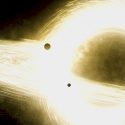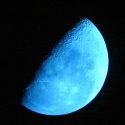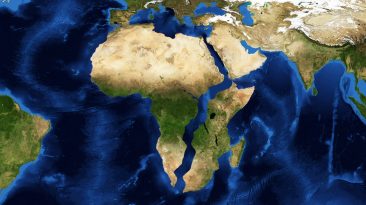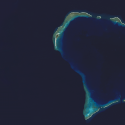Or, would a crash even happen? Would the moon get torn up by Earth’s gravity? What would this crumbled moon look like from Earth? Here’s what would happen if the Moon fell to Earth. The Moon is Earth’s only natural satellite, and the largest object to brighten our night sky.
First, we should establish more facts about our one satellite. The Moon was about formed 4.6 billion years ago, which was approximately between 30 and 50 million years after the formation of the solar system. The Moon is around 3,475 km in diameter, and its mass is 7.35 × 10^22 kg, which is about 0.01 of Earth’s mass. The Moon is also about a quarter of the size of planet Earth. Different parts of the Moon are vastly different temperatures. It can be as cold as negative 173 degrees Celsius (negative 280 degrees Fahrenheit), and as hot as 127 degrees Celsius (260 degrees Fahrenheit).
The Moon’s atmosphere is also very thin, which is why much of what astronauts left on its surface has not been wiped away. The Moon causes our tides by pulling on the Earth’s gravity. The Moon is usually an average of about 384,400 kilometers (or 238,750 miles) away from the Earth, which is approximately the size of eight Earths. The surface of the Moon is covered in craters because those are where it was hit by various comets and asteroids. On one side of the Moon, there are more than 300,000 craters that are over a kilometer wide. The Moon orbits the Earth every 29 days.
What Would Happen If The Moon Crashed Into Earth?
It’s the first and only place beyond Earth where humans have set foot. The Moon’s gravitational pull causes tides on Earth. Tides that might have been the encouragement for life in our oceans to move on land. This pull also keeps Earth from wobbling on its axis, making our climate relatively stable.
In short, the Moon makes Earth a more livable place. What if it suddenly sped up, and started driving in Earth’s direction? The Moon’s plan to destroy Earth by bumping into it would break into pieces the moment it reaches the Roche limit.
The Moon itself would shatter, never making it to Earth’s surface. And that’s going to look very impressive! But wait, what is this Roche limit? In celestial mechanics, it is the point at which the gravity holding a satellite together is weaker than the tidal forces trying to pull it apart.
In other words, the Moon can only get as close as 18,470 km (11,470 miles) away from our planet, before – BOOM! The tidal forces would tear it apart. All the footprints and flags we’ve left on the Moon, all of its craters and valleys would scatter to form a breathtaking ring of debris above Earth’s equator, 37,000-kilometers in diameter (23,000-miles).
Not Just Saturn, But Earth’s Rings
Making Earth the second planet in the solar system, after Saturn, to have this striking ring of beauty. The difference being that our rings wouldn’t last long. The chunks of our former satellite, the Moon, would rain down on Earth – smaller chunks first, bigger ones later.
It would be as if hundreds of thousands asteroids were falling down on us and wiping out entire cities in the process. But, really, our problems would’ve begun much earlier… Once the Moon began it’s trajectory towards the planet, it would increase the tidal impact it has on us.
By the time it hit the Roche limit, it would be causing tides as high as 7,600 meters (30,000 feet). Our world would be devastated by an army of tsunamis – ten times a day.
Waves so big they would expose the bottom of the ocean and destroy everything on their way. But for a short time, hardcore surfers would enjoy riding some tasty waves. On the other hand, this might become a solution to global warming. With the Moon coming closer, Earth’s rotation would speed up. Our days would become shorter and shorter.
Global temperatures would go down, nobody would worry about climate change anymore. Unless asteroids burned the Earth to a crisp. Then there would be no one to worry about anything. I really wouldn’t worry about it anyway.
In fact, the Moon is drifting away from us at the rate of 4 cm (1.5 inches) per year. So it’s very unlikely we’ll get to see those pretty Saturn-like rings here on Earth.



























